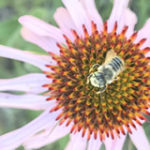V06-1, Fall 1992 – Angela Evenden reports “Thirteen New Research Natural Areas add 9,499 Acres to Northern Region RNA System”; “That’s Why They Call it Fall” by Peter Lesica tells why trees shed their leaves and what determines when they do it; “West Boulder: Wetlands to Limestone Cliffs” by Linda Iverson documents a June 6 field trip with species discussions; and the issue includes the publication note on a new book, The Propagation of Alpine Plants and Dwarf Bulbs by Brian Halliwell.
V06-2, Winter 1993 – Bonnie Heidel includes a plea for specimens of Montana native plants not documented since 1940 or earlier in “Wanted: Alive”; and Peter Lesica discusses the uncertainties and roles of phytochromes and vernalization in “When to Bloom”.
V06-3, Spring 1993 – “Type Localities and the Botanical Exploration of Montana” by Peter Lesica relates the discovery of species new to science to the selection of a representative plant and location – the type; “Update on the Status of Howelia aquatilis documents the sometimes interesting interaction between botany and bureaucracy; another bulletin documents “The Value of Old Growth Forests”; the first iteration of the “Montana Native Plant Society Guidelines for Collection [of] Native Plants 0-1993” appeared; in “Rediscovering Lost Species,” Judy Hoy discusses how Wally Albert found in the Missoula area several species not documented for many years in Montana; and Bonnie Heidel says to “Strike that Sedge” in a short note relating to the confusions and distinctions between Carex rostrata and C. utriculata.
V06-4, Summer 1993 – “Orobanche corymbosa, a ‘Low Profile’ Montana Native” by Judy Hoy reports the sighting of several populations in Ravalli and Deer Lodge counties; Richard Prodgers shows how to measure some community dynamics in “People Change – So Do Plant Communities”; “Harvesting of Pacific Yew No Longer Needed for Cancer Drug”; and “Conserving Rare Plants: The Forest Service and Center for Plant Conservation Join Forces”.




